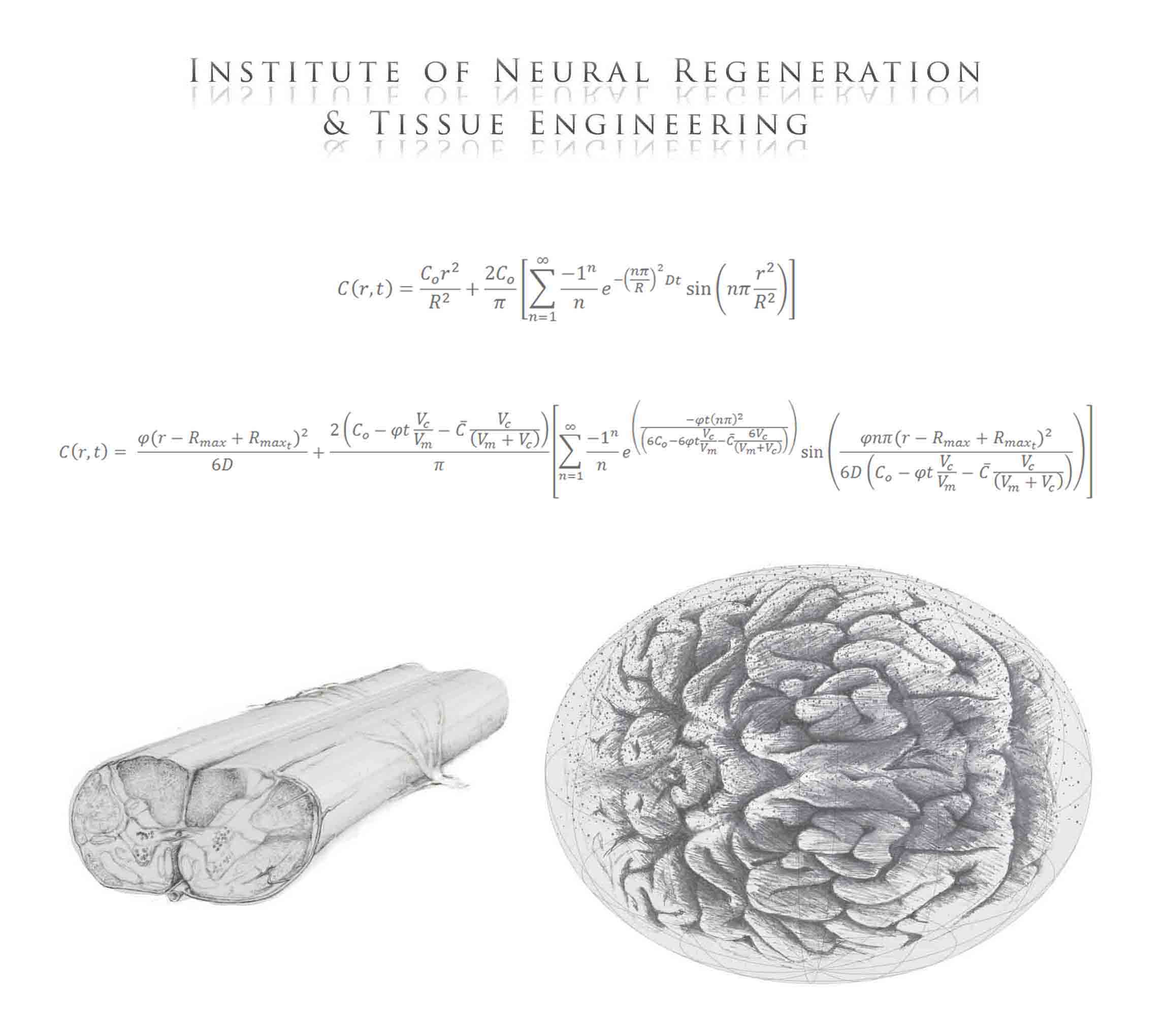Analytic Models of Oxygen and Nutrient Diffusion, Metabolism Dynamics, and Architecture Optimization in Three-Dimensional Tissue Constructs with Applications and Insights in Cerebral Organoids [Research Article in PubMed]
Brief Summary: Diffusion models are important in tissue engineering as they enable an understanding of molecular delivery to cells in tissue constructs. As three-dimensional (3D) tissue constructs become larger, more intricate, and more clinically applicable, it is essential to understand internal dynamics and signaling molecule concentrations throughout the tissue. Diffusion characteristics present a significant limitation in many engineered tissues, particularly for avascular tissues and for cells whose viability, differentiation, or function are affected by concentrations of oxygen and nutrients. This paper seeks to provide novel analytic solutions for certain cases of steady-state and non-steady-state diffusion and metabolism in basic 3D construct designs (planar, cylindrical, and spherical forms), solutions that would otherwise require mathematical approximations achieved through numerical methods. This model is applied to cerebral organoids, where it is shown that limitations in diffusion and organoid size can be partially overcome by localizing metabolically-active cells to an outer layer in a sphere, a regionalization process that is known to occur through neuroglial precursor migration both in organoids and in early brain development. The given prototypical solutions include a review of metabolic information for many cell types and can be broadly applied to many forms of tissue constructs. This work enables researchers to model oxygen and nutrient delivery to cells, predict cell viability, design constructs with improved diffusion capabilities, and accurately control molecular concentrations in tissue constructs that may be used in studying models of development and disease or for conditioning cells to enhance survival after insults like ischemia or implantation into the body, thereby providing a framework for better understanding and exploring the characteristics of engineered tissue constructs.

-------------------
References:
McMurtrey RJ. Analytic Models of Oxygen and Nutrient Diffusion, Metabolism Dynamics, and Architecture Optimization in Three-Dimensional Tissue Constructs with Applications and Insights in Cerebral Organoids. Tissue Engineering Part C. doi: 10.1089/ten.TEC.2015.0375 PMID: 26650970 arXiv:1512.06475
McMurtrey RJ. Patterned and Functionalized Nanofiber Scaffolds in 3-Dimensional Hydrogel Constructs Enhance Neurite Outgrowth and Directional Control. J. Neural Eng. 11 (2014) 066009 doi:10.1088/1741-2560/11/6/066009 PMID: 25358624 arXiv:1501.01338
McMurtrey RJ. Novel Advancements in Three-Dimensional Neural Tissue Engineering and Regenerative Medicine. Neural Regeneration Research. 2015 Mar; 10(3):352-354. doi: 10.4103/1673-5374.153674 PMID: 25878573 arXiv:1504.00698
Also see EurekAlert News Summary
Back to Education
| 